When you’re looking for new ways to improve the quality of your diet, don’t ignore the cookware you use to cook your healthy meals. The pots and pans you use directly affect the taste and nutritional value of your meals. Certain cookware materials are known to react with foods or release toxic gases when heated to high temperatures.
Due to growing customer demand and government guidelines, there are a variety of so-called safe cookware options on the market. Some old-fashioned cooking methods have also made a comeback in kitchens and restaurants around the world.
Clay pot cooking is a method of cooking food in an unglazed clay pot that has been soaked in water to release steam while cooking. Cooking with clay pots is an ancient tradition that gives food a special flavor and preserves its nutritional value.
Types of Clay Pots
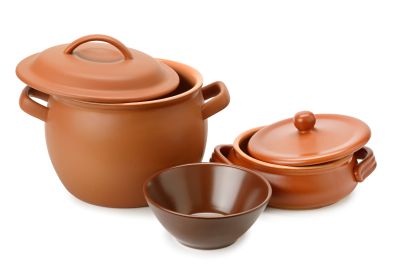
Clay pots are most commonly categorized by the type of clay they are made from and the firing temperature required.
Earthenware clay pots are typically made from impure, secondary clays that have been transported from their original location by water or wind. These clays contain rock particles, sand, and other impurities. The iron content gives the fired clay a reddish color. Clay pots are fired at lower temperatures (1700°F to 2100°F) than stoneware and porcelain and cannot be used for stovetop cooking. Earthenware is soft and porous clay whose glaze must be waterproof.
Stoneware is made from unrefined clay with fewer impurities. It is fired at higher temperatures than stoneware (2100®F to 2300®F). Stoneware is semi-glass, robust, chip-resistant, and more durable than stoneware.
Porcelain is made from the purest form of clay, kaolin. The fire range is between 2335°F and 2550°F. After firing, porcelain is non-porous, glass-like, and translucent. Once the glaze is applied, a very smooth and shiny surface is created.

Flameware pots are made from special “flame-resistant” clay that can withstand very high temperatures and resist thermal shock. Flameware can be used on all types of stoves and in all ovens.
Is Clay Cookware Safe?
Earthenware clay is a mixture of clays from different areas. These clays were transported to a new location by a stream. These transported clays are usually contaminated with non-clay minerals such as iron oxide, varying amounts of different metals, and other undesirable contaminants.
The clay used to make cookware should be free of harmful substances. Purity should be validated by a certified third-party laboratory. To ensure the safety of the sound, the purity test is carried out in both the pre- and post-production stages. Reputable companies regularly test the entire clay composition to ensure the highest quality and absence of impurities. Unglazed stoneware made from tested pure clay is 100% non-reactive.
Health Concerns about the Glaze
Earthenware clay is usually glazed to reduce porosity, make cookware more functional, and allow for easy cleaning. The composition of kitchen earthware glaze is regulated by both federal and state authorities.
What about Lead-Based Glazes?
Lead-based glazes, traditionally used for earthenware, can be harmful to health. Lead glazes are inexpensive materials excellent for creating an attractive glossy surface. However, if the glaze is not formulated and fired properly, lead can leach from the glaze and get into the food. We can be exposed to lead when we use unsafe lead-glazed earthenware to prepare, store, and serve food and drinks. Lead is considered one of the most toxic metals and can significantly affect human health.
Lead can be found in the glazes of some traditional homemade clay pieces made abroad and brought to the United States by individuals as souvenirs.
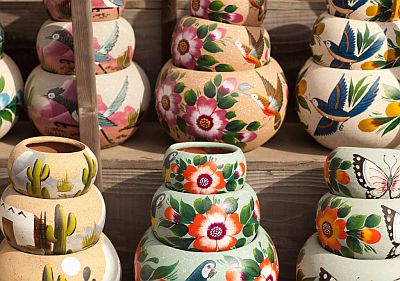
Due to the dangerous effects of lead, the FDA regulates limits for extractable lead in tableware to ensure its safety. Materials used in food contact materials should be lead-free or have lead levels that meet current FDA limits. Tableware that exceeds FDA limits, including glazed ceramics, cannot be legally sold in the United States.
How to Choose a Lead-Free Clay Pot?
The earthenware manufactured or sold in the United States must meet safety guidelines for lead content and is considered safe for food use.
Be sure to purchase clay cookware from a reliable manufacturer and look for a label that states the product is “food safe.” Also, choose a product that is labeled lead-free. Avoid heavily decorated tableware and handmade items made by individuals.
Do not use ceramics or highly decorative Asian dishes made in Mexico or Latin America to cook food, as these items may contain high lead levels. Even in developing countries, there are no strict rules for lead. The FDA recommends avoiding using these pieces as food, even if labeled “lead-free.”
This post contains links to Amazon. The publisher may get paid if You purchase something through the links without additional costs to You.
Unglazed Clay pot: Natural Terracotta Casserole with Lids Clay Pots for Cooking, Unglazed Earthenware Rice Pot (Amazon)
Benefits of Unglazed Clay Cookware
1. Less Fat and Calories
clay pot with a lid does not allow the steam to escape, as would be the case with metal cooking pots. The food is cooked in its natural juice. The steam circulating during cooking provides plenty of moisture and eliminates the need to add additional fats or liquids. The result is that cooked foods contain less fat and calories than foods prepared in metal pots.
2. Versatility
Clay cookware that has passed the purity test is suitable for almost all types of cooking. You can use it to fry, bake, braise, grill, brown, and serve hot and cold dishes. It is safe to put it in the microwave. Almost every basic recipe can be easily adapted for clay pot cooking.
3. Flavorful and Nutritious Dishes
The porous nature of stoneware allows for slow and even cooking, helping to preserve natural juices. The ingredients mix slowly to create a fuller flavor and enhanced aroma.
4. Preserved Nutritional Value
A clay pot is a good basis for a healthy and tasty meal. The food is slowly cooked in the pot in a closed environment. There is no loss of nutrients and all cooking liquids are incorporated into the dish, making the taste more delicious.
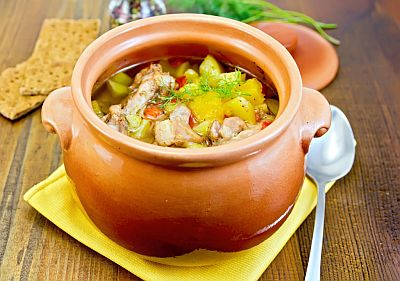
5. Heat Retaining Capability
All dishes are cooked at low to medium heat and use less energy. The heat retention ability of a clay pot ensures that food stays hotter for longer. You can turn off the stove 5 minutes before your food is fully cooked and the residual heat will finish cooking. Clay can also keep food warm for several hours after you have removed it from the oven.
Claypot ABC Soup Recipe – Video by BunnyDIY
Downsides
- Clay pots can easily break if you accidentally drop them. Sudden extreme temperatures can also cause clay pots to crack.
- Clay pots are heavy and can be difficult to handle, especially when hot.
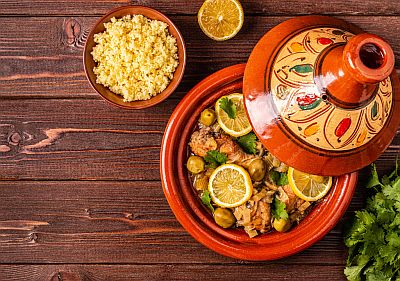
You may also like:

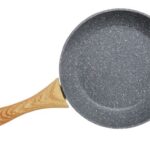
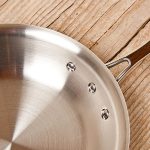

Nice article! I have been a fan of clay cooking myself and in my research, I found that not all clay cookware are safe and non-toxic. Only unglazed primary clay is free from toxins and healthy for cooking. With your permission, I’d like to post this link to an article that has useful information on this topic: http://ezinearticles.com/?How-to-Preserve-the-Nutritional-Value-of-Your-Food-With-Healthy-Cookware&id=9799287 I also did the baking soda test at home to test various cookware materials for toxicity and I found pure clay to be the best.
It would be nice to have a few websites where we can purchase safe earthenware cooking products.
what about Romertopf Made in Germany. Only thing I note is that the inner bottom is glass glazed which I am not too thrilled about. Any thing extra put on good clay fully soil tested for metals and minerals is not needed in my view. I can spend extra time cleaning and that is why I want to move from non stick
Hey Steve,
have you found a product that is fitting your criteria?
Thanks
Alok
Sir how to test baking soda on utensils plz if could mail me iam also using clay pots for coocking.thussain 080@ gmail.com